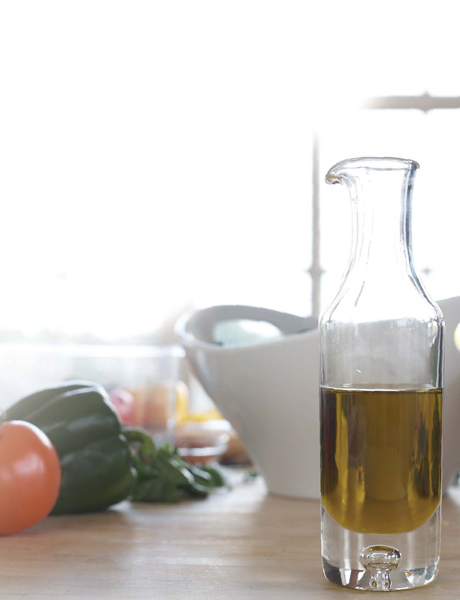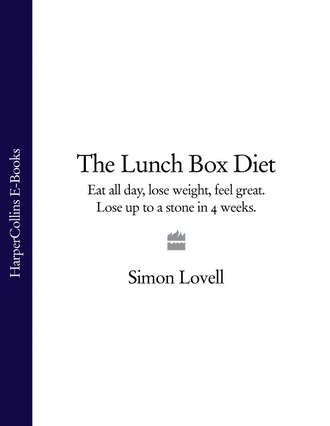
Полная версия
The Lunch Box Diet: Eat all day, lose weight, feel great. Lose up to a stone in 4 weeks.
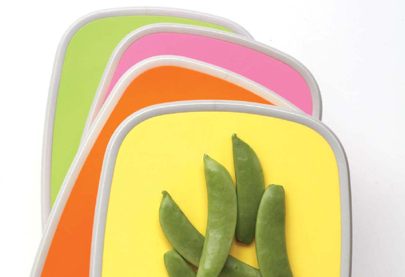
Why Diets Fail
The majority of fad diets are nothing more than very low-calorie diets with a gimmick or smoke screen to cover up this fact. Whether you’re told to eat a grapefruit or drink a strange mixture, at the end of the day, you’ve consumed fewer calories, often to the extreme.
At best, there’s a small grain of truth in each theory but only to a minuscule degree. All that these diets do is, once again, cover up the fact that calories are being restricted, no matter what horse and pony show went into making you not eat. And most of the time, you will not be able to stick with it because people, quite simply, get hungry! We like to eat. We don’t usually enjoy hunger pangs, weakness and dizziness. We do enjoy treats like chocolate and crisps. We can go some time without these things but if you ignore a craving long enough, chances are it’ll come back to bite you on the bum and a little craving for a taste of chocolate will snowball into eating an entire box!
Let’s recap:
Healthy weight loss relies on one equation.
Fad diets fail because most are very low-calorie diets (VLCDs for short).
Fad diets fail because they are too stringent.
Fad diets fail because they are not built for the long run.
Fad diets fail because starving yourself will mess with your metabolism! Metabolism? I know what you’re thinking: ‘You said you’d keep it simple!’ I will, I will.
The Bear Necessities
‘When you eat small amounts of food frequently throughout the day (graze) rather than starve yourself, your metabolism remains at optimum fuel-burning level’
Metabolism is the rate at which our bodies burn calories or, in other words, fuel. The higher the metabolism, the faster the fuel is burned. The lower the metabolism, the slower fuel is burned. When you starve yourself, you end up lowering your metabolism.
The best way I can explain how metabolism aids in weight loss is to talk about bears. Huh? You heard me right. A bear spends all summer fattening itself up. It has to fatten up to get through the whole winter without eating. A bear’s metabolism slows way, way down during hibernation. This is the body’s way of preserving all that fat the bear put on last summer. Good for the bear, not so good for you. When was the last time you saw a bear having to wear a backless cocktail dress?
When we starve ourselves, we do the same thing to our metabolism as hibernation does to the bear’s metabolism. Without any new fuel source, your body works as efficiently as possible by lowering its metabolism to conserve any existing fuel. It stores what it can. Conversely, when you eat small amounts of food frequently throughout the day (graze) rather than starve yourself, your metabolism remains at optimum fuel-burning level. It can rely on getting fuel every one to two hours and therefore it burns fuel instead of storing it.
That being said, you can’t eat high-calorie, high-fat food every one to two hours and still lose weight. So, what do you eat? That’s where my diet plan comes into play.
In designing the diet, I knew I wanted my clients to graze but I didn’t want to give them a blanket instruction to eat all day. They needed to eat foods that had a lot of nutritional punch per bite without a lot of calories. They needed something lasting and tasty yet without a ton of calories. Some foods are just fattening and may be low in nutrients. Those are the types of foods that, when consumed regularly, make us fat.
Beyond the Mirror
Overcoming Emotional Eating
Next time you overeat or indulge in fattening comfort foods, write down the emotions you are feeling.
When you feel the urge to eat, ask yourself, ‘Am I physically hungry or emotionally hungry?’
Keep temptation out of the fridge and cupboards. If instant gratification isn’t available, you’re less likely to eat for the wrong reasons.
Go for a walk, run or hit the gym the next time you’re angry, sad or anxious.
Before you reach for that pizza slice, stop, close your eyes and visualize the life you want for yourself. Will the pizza slice get you there? Will it fix what’s wrong?
In a world where thin is in and obesity is (what the heck rhymes with obesity?) not, it’s tough to be heavy for a whole plethora of reasons. Many of you are reading this book because you’re tired of being heavy and have chosen to do something about it. Good on you!
I’ve seen so many people literally change their entire lives when they drop the pounds. For most people, food means so much more than just fuel for our bodies. We use it at nearly every celebration: birthday cake, Easter eggs, and don’t even get me started on the days of feasting around Christmas. We’re taught at a very, very young age that sweets and cake are pleasant and that pleasant things make us feel good. If you scrape a knee, you get a plaster followed by a lolly to turn off the tears.
The lolly doesn’t fix the wound, but distracts the child’s attention from the pain. When you’re sad, lonely, restless, anxious or angry, your ‘lolly’ might be chocolate cake or a fast-food burger that distracts you from your emotions. For a brief moment, you’re preoccupying yourself by doing something pleasurable. Unfortunately, it’s not lasting and, just like the lolly, it doesn’t fix the wound. Food can’t fix what’s really wrong.
What’s worse is that the excess food is only complicating your life further. It’s a vicious cycle. We eat too much because we’re depressed, we gain weight, we get more depressed, we eat more, we gain more and so on. Stop the cycle! When you start treating your body right, when you take control of your weight instead of letting it control you, you empower yourself to make other changes in your life.
You may not be able to fix everything overnight but a journey begins with a single step. You have taken that step by purchasing this book and trusting me. I won’t let you down! I’ll be with you on that journey.
Kids and Emotional Eating
I really want what’s best for you and your kiddos. I hope these little tips will get you thinking about what you can do.
Try not to use food as a comfort with your kids. Instead of a lolly when they scrape their knee, how about a hug or kiss after the plaster? Perhaps suggest a trip to the book shop.
Dump the idea of ‘finish your food’. Don’t say things like ‘If you don’t finish your food, you can’t have dessert.’ Try to trust what they tell you about their bodies.
Don’t make food a focal point. Get your kids moving more by planning fun activities such as hikes, bike rides, or some other type of family adventure.
Slowly replace any fattening foods kept in the house with healthier alternatives.
Suggest a trip to the park after dinner instead of serving dessert.
For starters I urge everyone to join the Lunch Box Diet community (see page 224) at www.lunchboxdiet.co.uk – go and do it now. I will send you regular emails to keep you motivated and this is key to your success! I’m constantly coming up with new techniques, tips and tricks and I’ll share these with you. How about that for an added bonus?
Though looking good will be a big part of the end result of following this diet plan, what’s most important is how you will perceive yourself from the inside out once you begin the Lunch Box Diet. Eating healthily means feeling good. More energy, less illness, less chance of developing diseases related to obesity. You’ll be able to enjoy your life.
Whenever you’re feeling down, remember this word:
BELIEVE!
Believe in this diet. Believe in your efforts. Believe in me. Believe, above all, in you and your abilities!
We’ll get there! I promise!
Okay, enough pep talk. Can you feel the energy? If not, put the book down for a minute, get off your bum and jog around the couch ten times.
Ready? Let’s get to work. Turn the page.
Chapter 3 The Lunch Box Diet
You made it! We finally get to delve into this life-changing eating plan. You’re days away from feeling fantastic!
Hard to believe? Believe it, because in just seven days you’re going to feel the effects of optimum nutrition. Work independently for a month, following the lunch box system, or finish my 28-day plan and you’ll be on top of the world.
The Box
Okay, remember our little chat about healthy weight loss, grazing and metabolism (see page 25)? You’re now going to find out why you had to go back to school for a bit.
Here’s what you will be doing:
1 Eat a healthy breakfast (or your normal breakfast and build up to a healthier one).
2 Graze from your lunch box between breakfast and dinner.
3 Eat a healthy dinner (or your normal dinner and build up to a healthier one).
The lunch box concept is simply the most effective and easiest way to control most people’s nutrition because:
You know exactly what you’re eating.
You don’t have to plan and prepare meal after meal.
You will have a choice of foods that will enable you to enjoy eating from your plastic friend!
Lunch boxes are quick to put together, tasty and will give you bucketloads of energy! Not to mention the added health benefits that we’ll discuss later in Chapter 8.
When working with personal training clients, I always ask them to keep a record of their food intake (a food diary) for about a week to get an idea of what they like and how they eat. I often find that the pitfalls of their dieting behaviour have a lot to do with their busy lifestyles. I suggest you keep a food diary yourself and note down your own thoughts on your food consumption; you may get a bit of a shock, but that’s fine. Just write down everything you eat for a week, including any drinks, and the times you eat, plus the exercise you take.
Finding healthy options during a normal, busy day is extremely difficult. My clients would either go without because they didn’t have good choices, or they would opt for the fast-food or vending-machine items out of sheer necessity. We simply don’t make informed choices when we’re hungry, and that’s why the Lunch Box Diet is such a good way of eating. By grazing out of a box that you prepare ahead of time, you will be eliminating two major barriers to healthy weight loss.
You won’t end up choosing junk because your blood sugar levels will be more balanced.
You won’t devour the contents of the fridge as soon as you get a chance.
I’ll talk about breakfast and dinner in a bit (see chapter 6) but for now, let’s concentrate on the box itself.
The Method
Preparing Quick Boxes
Pick pre-cooked meats and mixed vegetable packs.
Cook extra meat at your evening meal to put in your box the next day.
Stock up on herbs and other dressing ingredients from Group C.
Buy frozen vegetables.
Bribe your partner to make your box at the same time as they’re making their own.
Remember: I don’t want you to have the hassle of measuring and weighing and counting calories. That’s why I keep it simple. If you can count, you can do this!
You’ll need a container with a lid that has a volume of between 2 and 5 litres. To find the volume of your box, simply pour water into it from a measuring jug. Mine is about the size of a shoebox and I’d class myself as an average-sized male. The size will become more apparent to you as you go along with the diet and adjustments can easily be made. The simple rule here is to pack more than you think you’ll need at first and then drop the box size (or simply the amount of food you put in it) once you’re used to the system. The main thing is not to pack too little and go hungry.
The idea is that you will eat a few mouthfuls from your box every hour or so – never to the point thatyou’re full, only until you’re satisfied. This is what grazing is. Your brain takes around 20 to 30 minutes to catch up with your stomach so take a few bites and if in 20 to 30 minutes you’re still hungry, take a few more bites. Yep, it’s as easy as that.
You’ll learn quickly that you can be easily satisfied on less when you graze because you’re constantly refuelling the body. Your stomach will adjust to less food just as it does the opposite when we overeat. When you pig out at a meal you stretch the stomach, making it more difficult to feel satisfied at the next meal, and you’re left on the sofa feeling tired and bloated. Yep, it’s that vicious cycle again, which you will now break!
Grazing does the exact opposite, super-fast, leaving you brimming with energy. What this means is that over time, you can reduce the size of your lunch box as you’ll need less to feel satisfied. I never want you to feel hungry – that’s the main thing; but if you are regularly having trouble finishing your box, just cut down the contents. It’s as easy as that!
What Do You Put in the Box?
There are three groups that you will be choosing from:
Group A: Vegetables – 45-60 per cent of your box by volume
Group B: Lean Protein – 15-30 per cent of your box by volume
Group C: Sauce – 10 per cent of your box by volume
And as an optional extra ONLY if you have high activity levels or diabetes:
Group D: Active Carbs System – 0-30 per cent quantity depends on energy requirements
As you can see, your largest portion of the box is comprised of vegetables. You’ll be choosing five veggies from the Group A list. The key here is to be colourful. You’re most likely to create the perfect combination of nutrients when you choose a rainbow of vegetables because different colours indicate that they contain different kinds of the nutrients known as phytochemicals.

Group A: Vegetables
45-60% Pick 5
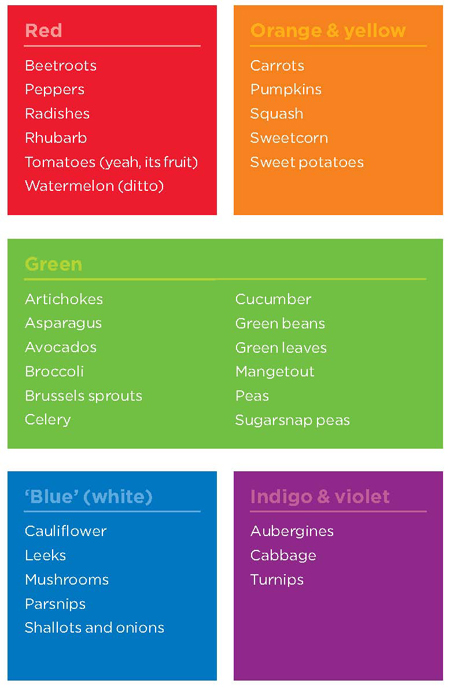
Vegetable Tastebud Builder
I encourage you to use the guide below to wean your way to liking vegetables – your key to a healthier lifestyle. Pick the option that applies to you.
You love vegetables so much that you could have been one in your previous life.
Fantastic! You can use the Lunch Box Diet up to seven days a week if you wish.
You’re a fan of vegetables, but like to be naughty sometimes.
No problem. Use the diet in your working week and take a couple of days off at weekends to reward yourself.
I don’t mind vegetables but I prefer other foods.
Okay, so bring the diet into your life three days a week and increase that once you begin to feel the benefits.
Vegetables? Sure! I love ketchup and lettuce on my burger!
You should have a lunch box once a week to begin with and try adding another day every couple of weeks to gradually educate your digestive system and taste buds.
Whenever you can, use fresh, raw, organic vegetables. For the ones that need to be cooked, you can steam, grill, oven bake or microwave them. Please don’t torture your veggies by boiling the life and the nutrients out of them and don’t add oil or butter when preparing them. You’ll be adding flavour to your box later, so be patient!
Now, you might be thinking ‘I’m not a rabbit, Simon! I can’t possibly eat all those weeds and things!’ No worries! If your taste buds are used to greasy, calorie-laden foods like pizza, bacon and eggs, cakes and sweets, you’ll have a bit of adjustment to make. All that sugar, sodium and saturated fat does indeed taste good but what’s the price? Your belly, bum and thighs. Not to mention clogged arteries, diabetes, high blood pressure, bad skin and hair…the list goes on and on.
Individual tastes vary from person to person, partly due to our genetic make-up and partly because of the tastes we are introduced to as very young children. Some people might be under-tasters and some may be super-tasters. This has to do with the number of taste buds per square centimetre on your tongue. Under-tasters with fewer taste buds tend to pile on the sugar and go heavy with salt. Vegetables taste bland for these folks. On the other hand, super-tasters with a lot of taste buds might find some veggies overwhelmingly bitter.
It’s not hard to retrain your taste buds and get to know your vegetables (check out my bite-sized tips). Truth is, if you don’t, I can safely say you’ll continue to have weight issues and be unhealthy as well. Fact of the matter is, we weren’t put on this earth to eat crisps and chocolate bars. Ask yourself, did Mother Nature grow it that way? We were provided with certain basic foods that are good for us in their natural state. By eating naturally, we’re giving ourselves what we need. If you don’t like vegetables it’s because you’ve been eating rubbish for so long that you’ve got used to it. But if you want to be vibrant, sexy, full of energy and taut around the stomach then you will need to acquire a taste for vegetables at some point.
Group B: Protein
15-30% Pick 1
Here’s where you’ll be getting your staying power. Protein takes longer to digest than carbohydrates and therefore leaves you feeling satisfied longer. Pick one type of protein source for each lunch box.
Choose quality meat and avoid the pre-packaged stuff that is mostly fillers and water and is poor in nutritional value. Although better-quality meats cost a bit more, you’ll quickly realise that you need less of them to satisfy you. I also advocate buying organic if you can afford it (see page 80 for the reasons why) but it’s not imperative.
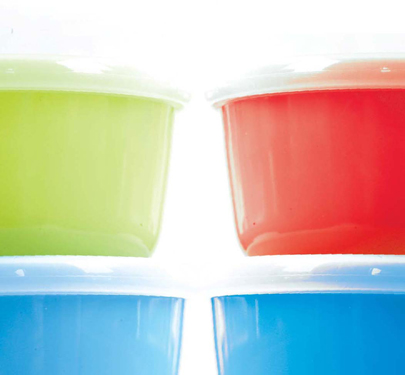
Beef
Lean cuts: sirloin, rump steak, topside, silverside
Lamb
Shoulder, rack or cutlets
Fish
Oily fish: salmon, sardines, herring, mackerel, trout, tuna White fish: sole, haddock, cod, sea bass, sea bream, skate
Shellfish
Prawns, shrimp, crab, lobster, mussels, cockles, scallops, oysters
Poultry
White meat: chicken or turkey breast
Pork
Pork and lean cuts of ham
Dairy
Eggs
Plant sources
Tofu, chickpeas, beans, seeds and nuts
Money Saving
Proteins can be pricy, so here are the ones with the best nutritional bang for your buck:
Eggs
Beans (aduki, blackeye, borlotti, flageolet, haricot, red kidney)
Chickpeas
Lentils
Tinned fish (sardines, pilchards, mackerel, salmon, tuna)
Turkey breast
Group C: Dressing
10%
Sprinkle a dressing into your box after adding vegetables and protein, to bring it alive. I like hot sauces, herbs and black pepper – make your own or buy them (see page 91), but read the labels for added sugar and E numbers. Don’t worry about the calories since you’re only sprinkling or drizzling.
Cheese (lightly sprinkled – all types)
Chinese-style dressings (made with tahini, rice vinegar, sesame oil and soy sauce)
Chutney (see page 214 for recipe)
Fruit, chopped (apple, watermelon, pear, strawberries)
Garlic, ginger and onion
Guacamole (avocado, tomato, lime juice, red onion, chilli)
Harissa paste (made with chilli, garlic, caraway, coriander and olive oil)
Herbs (fresh – any kind at all)
Hummus (mashed chickpeas, tahini, lemon juice and garlic)
Lemon, lime, apple or orange juice
Marinades (see page 212 for recipes)
Oils (olive or nut – just a splash)
Olives and capers
Pepper sauce (my favourite!)
Pesto (see page 215 for recipe)
Salsa (see page 214 for recipe)
Sauerkraut
Soy sauce (choose the ‘light’ varieties)
Tapenade (olive paste with lemon juice and garlic)
Teriyaki sauce (see page 213 for recipe)
Thai fish sauce (made with anchovies)
Tomato sauce (fresh, see page 87 for recipe)
Tzatziki (fresh, see page 214 for recipe)
Vinegar (plain, fruit-flavoured, cider or wine, or vinaigrettes)
Wasabi, soy and ginger (traditional sushi accompaniments)
Once again, be creative. I’ve provided you with some suggestions and you can invent your own combinations.
A little oil goes a long way. Though olive oil and walnut oil are good fats, they have a strong flavour and you shouldn’t drench your lunch box in them. You can always add a bit more if you need to, but don’t forget that your veggies and meats will be absorbing the flavouring as they marinate in the box throughout the day, making the taste more intense. You don’t want everything to taste like pickles by 5pm! You might consider tossing in a small, sealed container of sauce so that you can add extra later if you need to.
